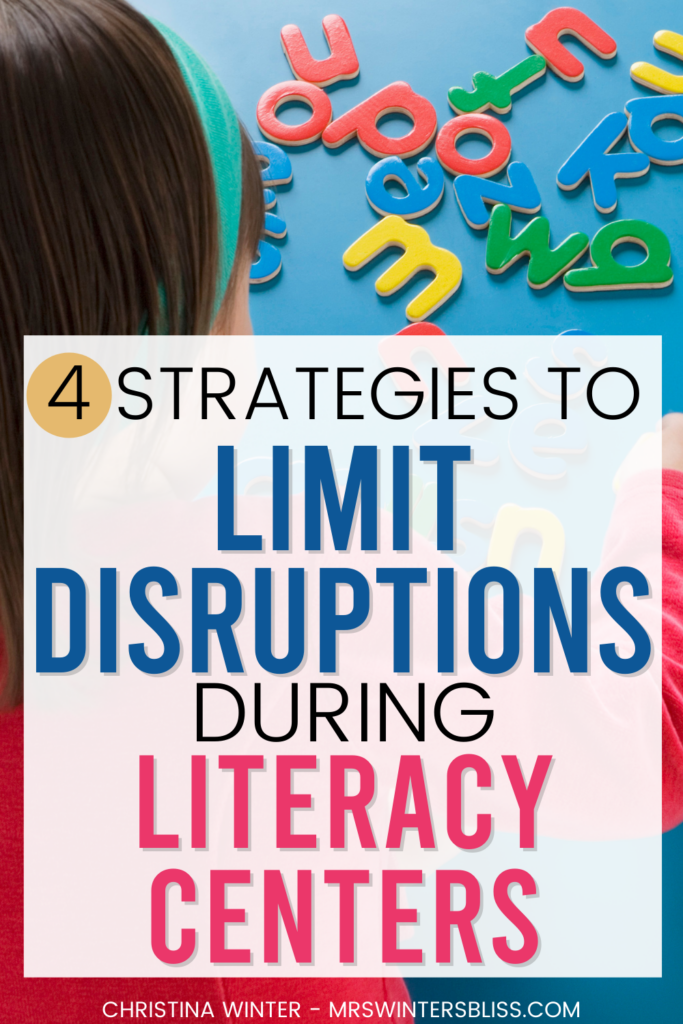
In this post I’m sharing 4 tips to help limit disruptions and build independence during literacy centers so that you can focus your full attention on targeted, small-group instruction in kindergarten, first and second-grade classrooms.
Do you struggle to keep students on task and working independently during literacy centers? Do they disrupt and pull you away from your small group instruction? If so, know you are not alone.
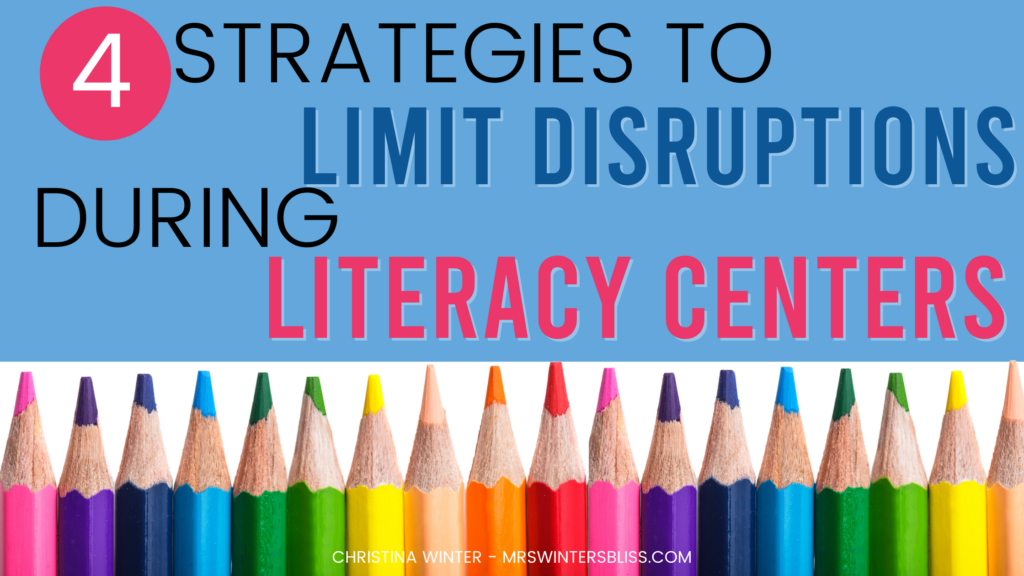
The ability to work with small groups is one of the main benefits of literacy centers. This is such valuable instructional time. Within a small group, I am able to provide targeted, explicit instruction to each student. I can assess their understanding of the skill being taught and provide immediate corrective feedback when needed. Small groups allow me to perform informal assessments and collect data that helps drive my instruction. I can watch as they attempt a task and get a clear sense of their understandings and misconceptions. It is such important work and it requires my full attention.
So what are the rest of the students doing while I’m working with this small group? The answer is they are working independently in centers.
I know many teachers struggle to get students to stay on-task during centers. That’s why today I am happy to share 4 strategies I have successfully used to limit disruptions during center time. These tips will help your students to become independent and give you the freedom to focus on your small group instruction!
How to Limit Disruptions During Centers
1. Clearly model and practice expected behaviors
I am a firm believer in investing the time at the beginning of the year (or anytime a new center is launched) to explicitly TEACH, MODEL and PRACTICE expected behaviors.
Introduce just one center at a time. Use think-alouds and model how you expect your students to complete the activity. Then ask students to recap what they saw you do. Next, practice that single center activity altogether. After completing the activity come together to discuss how it went and give explicit examples of positive behavior you observed.
In addition to being clear about expected behaviors, you must be explicit about the consequences for when students don’t adhere to the expectations. Decide on the consequences that work for you. Then explain them to your students to ensure you are all on the same page.
And remember, when you need to put an end to disruptive behavior don’t be afraid to be firm. It’s not the same as being mean. Be direct and pay attention to your tone and volume. Be consistent and follow through with the consequences you have established!
2. Organize your centers to limit disruptions
It is essential that the materials students will need for a center be accessible and well-organized. This preserves instructional minutes and allows for maximum learning time. The last thing you want is to have students wandering around the room in search of a clipboard or interrupting your small group to ask for you for a dry erase marker!
I do my best to choose literacy center activities that don’t require a lot of materials. Of course, some centers have materials and they do need to be organized!
The first thing I do is explicitly teach students routines and procedures for taking out materials, using them and storing them when not in use. If necessary, I may choose a particularly responsible student and train them to manage centers that have a lot of materials.
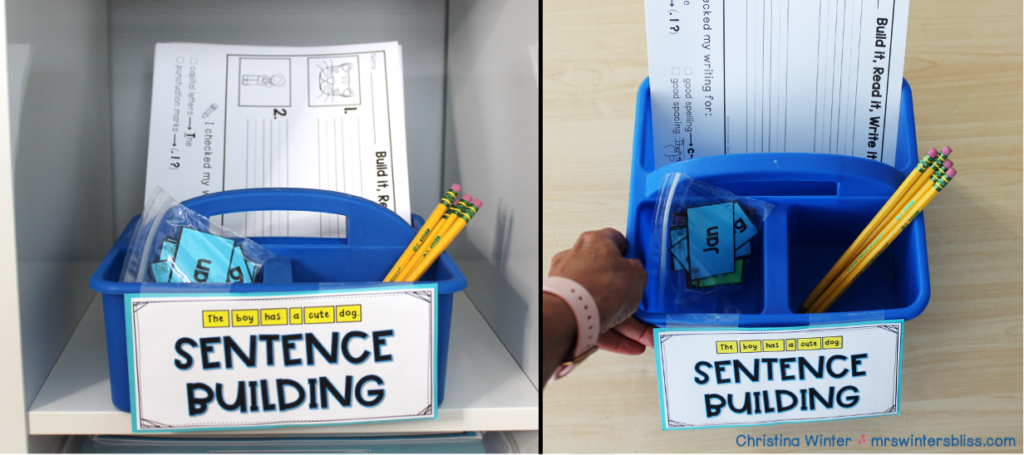
I always make sure that anything a student will need to complete the activity is at the center or in the bin. I want to avoid any extra movement around the room to gather supplies!
Another tip… try to keep the materials you use in your centers consistent. For example, I teach students to use sheet protectors and dry erase markers to complete activities. This helps to cut back on copies and saves prep time!
3. Teach students problem-solving strategies
It’s important to remember that our students are young and still need a lot of support and guidance to make good choices. You don’t want little problems to take away valuable learning time and you certainly don’t want students interrupting your small group to tell on another or ask you a simple question.
Take time to teach problem-solving strategies for specific problems that commonly arise in centers. Deciding who goes first, what to do if you need help, how to give help, what to do if you finish early, and when it is and isn’t okay to interrupt the teacher are just some of the things that need to be taught. I explicitly teach students how to solve such problems and post them on a chart that they can easily refer to while working in centers.
4. Choose literacy center activities that are naturally differentiated and open-ended
In any classroom you’re going to have a wide range of abilities among students. In order for my centers to be successful I know I need to find activities that adequately support and challenge ALL of my students. If an activity is too difficult students will become frustrated and lose interest. An activity that is too hard will lead to boredom and off-task behavior.
I like literacy center activities that have things like checklists, vocabulary banks, and/or pictures that support students and help build their independence. Having different versions of an activity is also helpful to ensure all students are appropriately challenged and supported.
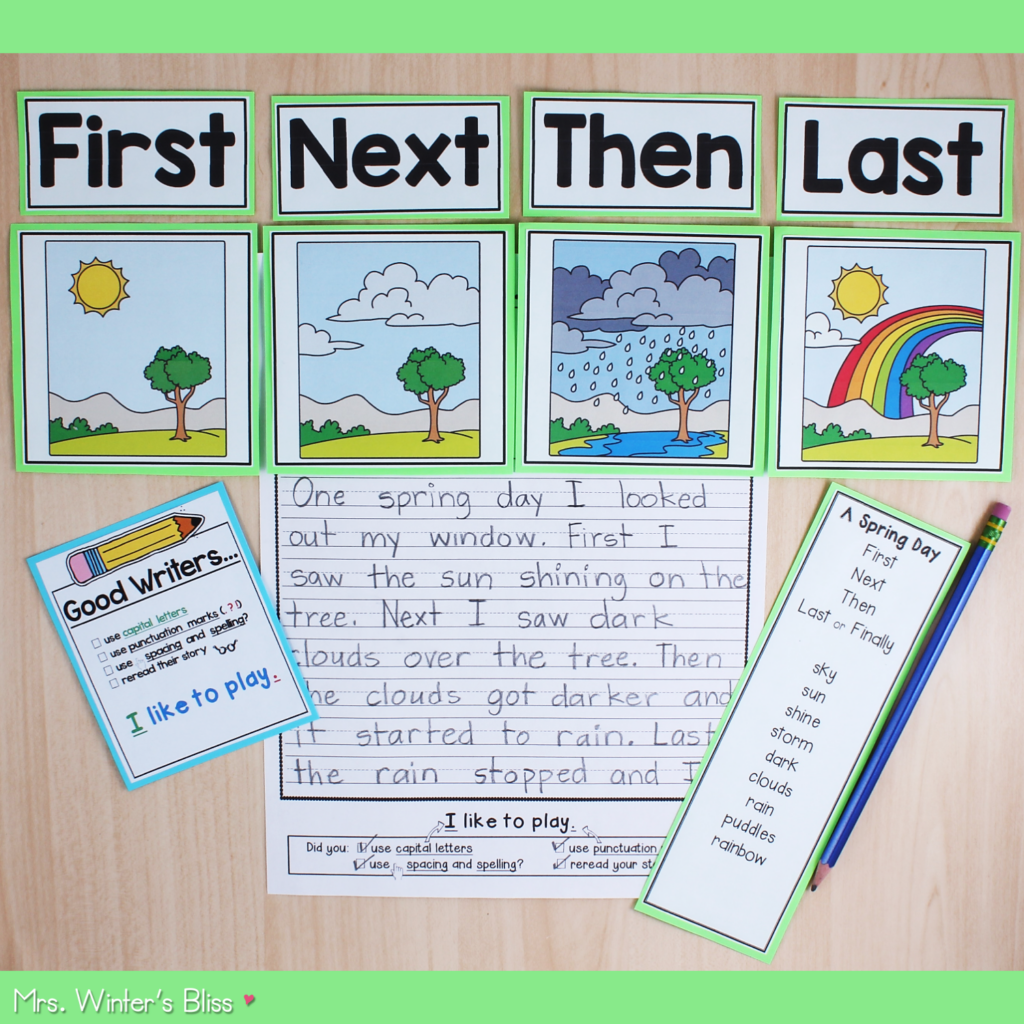
The Story Sequence Writing Prompts are one of my favorite naturally differentiated literacy center activities. For this writing activity, students use four sequence picture cards to order events. They then use transition words and specific story vocabulary to write their piece. All the supports are in place to ensure all writers are successful!
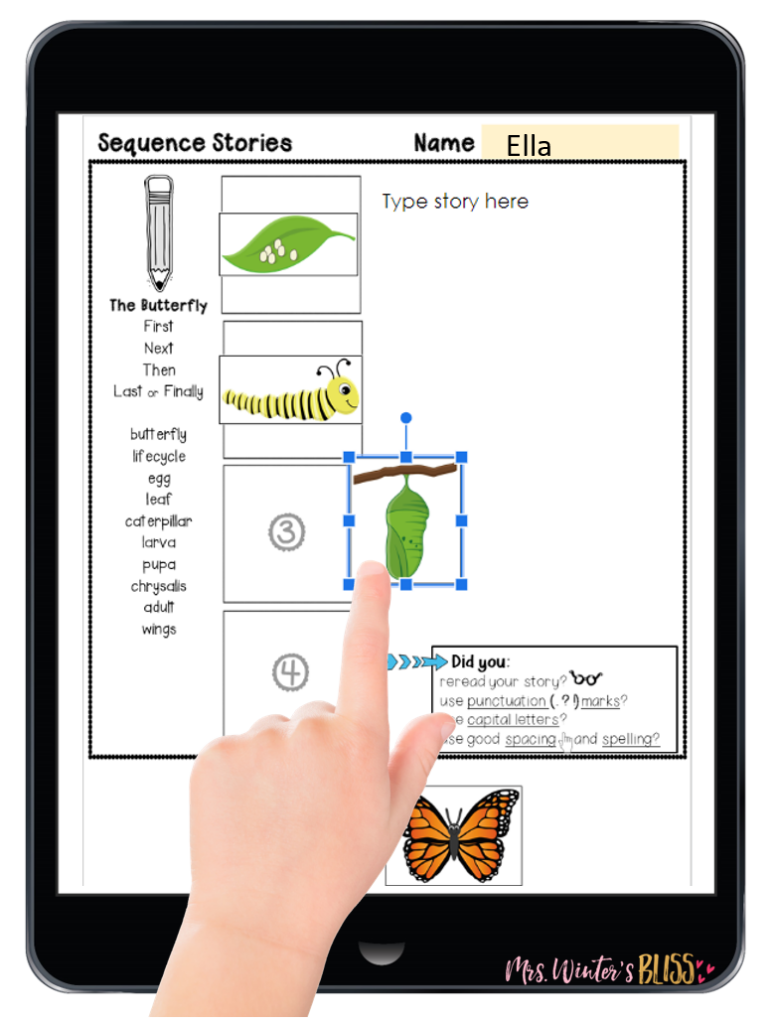
Take a look at this post for more low-prep, naturally differentiated literacy center activity ideas.
Finally, in addition to naturally differentiated centers, it is smart to rely on activities that are open-ended. One thing you DO NOT want to hear during your literacy center block is “I’m all done!”. To avoid this, I rely on activities that are open-ended and explicitly teach my students how to continue working even when they think they are done.
For example, if a student is at the listening center and the story ends I simply teach them to choose another story! No need to announce the story ended, just go ahead and pick another one until it is time to rotate.
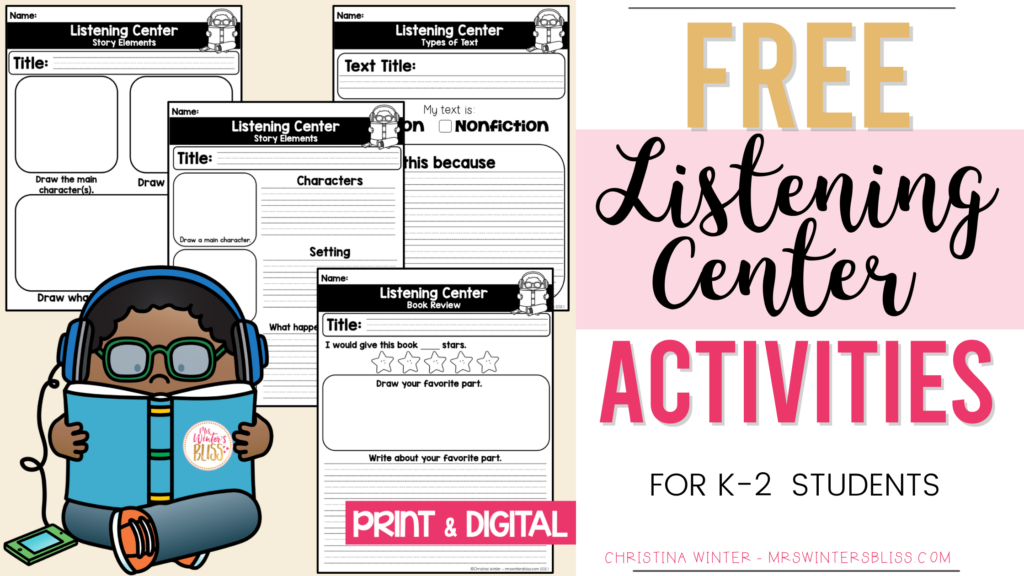
You can download FREE Listening Center Response Activities in this post!
I hope the tips I have shared here today will help limit disruptions during literacy centers. Investing time in helping students to become independent will allow you to focus your full attention on your targeted small group instruction!
Feeling overwhelmed in trying to plan effective literacy centers or exhausted from all the center chaos many teachers experience?
Imagine there was an easy, foolproof process for running literacy centers without the circus, noise, or interruptions…
AND if you could get new, low-prep Science of Reading-aligned centers every month…plus detailed, specific trainings…would you finally feel confident about doing centers in your classroom?
All of this awaits you inside my K-2 membership, Leaders of Literacy!
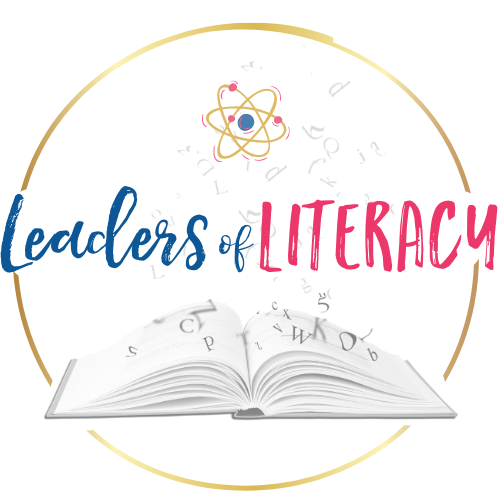
.
Join the waitlist and be notified first with more details when it’s open for enrollment!
*87% of the time, school spam filters block emails like mine 😩 Please use a personal address so you don’t miss a thing!
a
a









